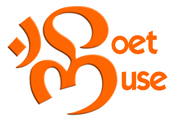A Day Honoring Our Ancestors
The memory of a loved one never fades; we carry that memory in our minds, hearts, spirit, and even in our DNA, the blueprint of our individuality. Such memory reminds us that we are connected to each other physically, emotionally, mentally and spiritually as a community; it also prompts us to celebrate the footsteps of those ancestors who walked the Earth before us. Just as the memory of our loved ones survives in our souls, tears, blood, and bone marrow, Día De Los Muertos has endured more than 3,000 years, yet its origins and purpose are often mistaken.
As evident in the archeological record, cross-culturally and throughout the space-time continuum, before the appearance of villages, hamlets, boroughs and more complex forms of settlement pattern and social organization, all cultures across the world paid homage to their dead in myriad ways. Rituals surrounding death constitute the origins of art and music and include oral and written traditions as well as elaborate processions and dances.
Performed to mark the death of distinct members of their society, The Egungun festival, a part of the Yoruba traditional religion, consists of an elaborate dance. In Malaysia, The Mah Meri tribe celebrates their dead with a day of dancing. Shamans bless the event before the ceremonies begin. Obon, one of Japan’s most well-known holidays and known as The Lantern Festival or The Festival of the Dead is a day to honor and celebrate those who have passed away.
Through the ages, death has been associated with a distinct rite of passage, equivalent only to birth. All world cosmologies and religions see death as a passage into another form of life; some call it heaven, others refer to it as a way of reaching nirvana. Still, others see it as a return to the Tree of Life. Traditions mourning those who depart may change, evolve, express in more complex forms, but they never die.
Elaborate rituals evolved in Egypt, Mesopotamia, Persia, and in the Americas. One of the oldest celebrations in the world honoring those who left this plane emerged in Mexico.
Cortez and his crew learned about Día De Los Muertos when they arrived in central Mexico in the 16th century. Spanish Conquerors viewed the ritual initiated by the Aztecs some 3,000 years ago as sacrilegious. The festival survived despite the Spaniards’ attempts to quash it.
Not only Día De Los Muertos survived, but it also thrived, traveling from southern Mexico to North, Central, and South America as well as to islands in the Caribbean and West Indies; as part of its survival, the elaborate festival syncretized, merging with elements of Christianity. Initially celebrated in the summer, it moved to November 1st and 2nd to coincide with All Saints Days and All Souls Day.
Day of the Dead or All Souls Day is still celebrated throughout Mexico, Latin America, Spain, and many cities in the United States. The festival even reached Hollywood in a scene in 2015’s “Spectre,” where Daniel Craig’s James Bond pursues a villain through Mexico City during a massive Day of the Dead Carnival. The 2014 film “The Book of Life” features a Day of the Dead theme that includes animation filled with calacas (skeletons) and calaveras (skulls).
Day of the Dead has also conquered the heart of some areas of the United States. In Arizona alone, dozens of events honor the dead. The All Souls Procession in Tucson is one of the most important, inclusive and authentic public ceremonies in North America today. The Procession originated in Tucson, Arizona, in 1990, and it is now running for its 27th year.
When I look back to my childhood, I recall vividly all the rituals involving Día De Los Muertos. Everyone in Venezuela, my second homeland, would go to the cemetery to spend time with their dead. People baked elaborate skulls made of sugar to honor our departed loved ones, including our pets. Meeting family and seeing friends at the cemetery and during the procession turned into a celebration of life.
As Cuban refugees who had arrived alone to a new homeland, my parents and I did not have the opportunity to bring flowers to our loved ones left behind in Cuba, our island of sun. Therefore, Mama would prepare an elaborate altar to honor all our loved ones who had passed. Other immigrant families and friends in similar situations, would join our Día De Los Muertos celebration, bringing flowers, candles, photos, and objects belonging to their loved ones to our community altar and food to share.
When I look back, I recall a particular Día De Los Muertos when my mother was hospitalized for several months while receiving cancer treatment. Immortalized in a piece of autobiographical fiction titled: Día De Los Muertos, this childhood memory still brings tears to my eyes.
Día De Los Muertos has never been associated with fear. On the contrary, it is a holiday about telling stories of loved ones who have departed and about instilling their memory on younger generations. Part of the tradition is to smile at death and to see it as a significant natural rite of passage that equates only to birth. In doing so, we meaningfully celebrate our ancestors as they were when they were alive on this earth among us. It has never been a sad day or a scary day. Día De Los Muertos stands on its own as a fiesta to acknowledge that Death is the great equalizer, and to celebrate those who have left their footprints before us.
